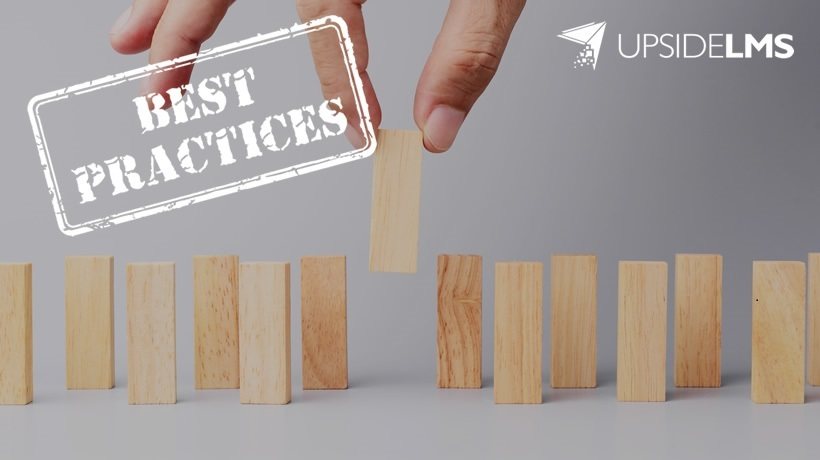Realizing The Perfect Training Management System Selection And Implementation Has Never Been So Easy
Deciding to bring any software into your business is a big decision. Obviously, the whole point of a new system is to make your business run more smoothly, and help your staff get their jobs done faster. The last thing you want to do is bring in a new system. This will have a negative effect on your business and actually slow your processes down.
The best way to help avoid you doing this is to make sure you select the correct piece of software for your business, and then make sure it is implemented effectively.
Let’s take a look at how you should carry out this process when you are shopping around for a new training management system for your training business.
The Perfect Training Management System Selection
1. What Problems Are You Trying To Solve?
The first stage of deciding on which training management system will be the best for your business is to think about what problems you are actually trying to solve. These should be the things which are currently slowing your business down, or making processes clunky and difficult. Make sure you ask all the staff that will potentially be using the new software. Since you need everyone’s opinion on what isn’t going well right now, (so) you can look to hopefully solve these issues with your new TMS. So ask all the departments, and all the levels of staff who will be using the TMS, and you should get a full picture of what all the current problems are for your business.
Next, you need to think about what would solve these problems specifically, and relate these to features that training management systems typically offer. Here are a couple of examples of what we are talking about:
- Problem: Too many emails are being sent manually to students.
- Ideal Solution: A way to speed up the sending of emails and cut down on manual data entry.
- Possible TMS Feature: Automated communications.
- Problem: Compiling reports every month is taking a long time.
- Ideal Solution: Set up a template for a report, and then have it compile automatically every month.
- Possible TMS Feature: Training reporting system with reports which are updated in real-time after you decide which data you want them to display.
- Problem: Sales team are spending a lot of time on the phone in order to make sales.
- Ideal Solution: Offer online course sales as well, so customers have the option to purchase online, which will free up Sales team.
- Possible TMS Feature: Integrated online course booking system.
By taking the time to see exactly which problems you are trying to solve, you have just written a list of all the features your business needs in a training management system. This should provide the basis for the essentials that you need from a TMS. Later on, you can add on any other features which you would like to see as well to build your perfect product.
2. Take A Free Trial
How are you supposed to know a piece of software is going to work for you if you don’t try it out? Reading about certain features is all well and good, as anything can sound good on paper. However, until you have a go yourself, you won’t actually know if it’s going to work for you or not.
A lot of software providers will offer a free trial for a couple of weeks to let you get a feel for the product. While you probably won’t be able to access all the features(that) a paid version would offer you, you will still get the chance to have a shot of the user interface, and see how easy the product is to use in general.
It will also give you the chance to let different members of your team have access to your free trial to see what they think, so you don’t just have to have one person making the decision.
This will allow you to test drive a number of different options, and directly compare how one TMS works versus another one, and see which one is the best for you and your business.
3. Book A Demo
While I’m sure the last thing you want to do is spend a lot of time talking to different salespeople, sometimes taking a demo of something like a TMS really is the best option to help you make an informed decision.
Not only can they show you through all the main points of the system, they can also answer any specific questions you may have, which you may not have been able to find the answer to yourself when you took your free trial. As with the free trial, you can usually have a lot of different team members on the demo if you want, so you can have all your key decision makers on the call to see what each TMS has to offer.
This also gives you a chance to make sure the training management system offers everything you need, and whether certain features are included or if they will cost you extra. Having a clear idea of exactly how much your new TMS is going to cost each month is key to your decision-making process.
Booking a demo is exactly like taking a car for a test drive, and it enables you to see all the features you need to, and address any issues you have before you commit to buying. You want to make sure you’re buying software that is the perfect fit, and taking the time to complete a personalised demo is the best way to do this.
Implementing Your TMS
1. Get Implemented
After you’ve chosen the perfect piece of software for your business, the next stage is to actually implement it. The first stage of this is to get your business all set up with the software. This will usually involve a couple of key people in your business completing training with the software providers to make sure everything is set up correctly, and that there are some ‘product experts’ within your business to help on-board the rest of your team with the TMS.
Check what sort of implementation options are on offer before you purchase your TMS, as most software providers will be different, and different options may have different charges attached. Some software providers could offer a couple of days on in-house training, where they will come to your office and talk some of your staff members through setting up the TMS, along with things like how to add new users and other administration related things. Other providers may offer online training sessions or access to a knowledge base to make sure you have all the information you need. Again, you need to think about what will work best for your team to make sure you get the most use out of your software possible.
2. Getting The Team Up-To-Speed
After a couple of key people are up-to-speed on how to use your new TMS, you know need to get the rest of the business clued up. There are a few ways you can do this, and you may want to offer a mix of them all to make sure you are catering to everyone’s learning styles:
- Give the rest of the team access to a centralised knowledge base provided by the TMS provider, so they can always look up any problems they have.
- Hold classroom-based sessions to train people on how to use the TMS.
- Get recordings of any online training sessions you have completed with the TMS provider and share these around the rest of the team, so everyone will get the benefit without having to have your entire team on the call.
- Have a couple of experts within your business which team members can direct all their questions towards if they get stuck.
- Create your own learning content based around how your business specifically uses the TMS so that staff are trained specifically on the bits they need and the bits that would provide the most value to them.
You need to give your whole team the chance to learn exactly how to use your new TMS. Otherwise, you run the risk of people getting stuck and abandoning it in favor of the old systems they used to use. This means your business won’t be as productive as they could be, and you’ll be wasting money on software that not everyone is using to its full potential!









